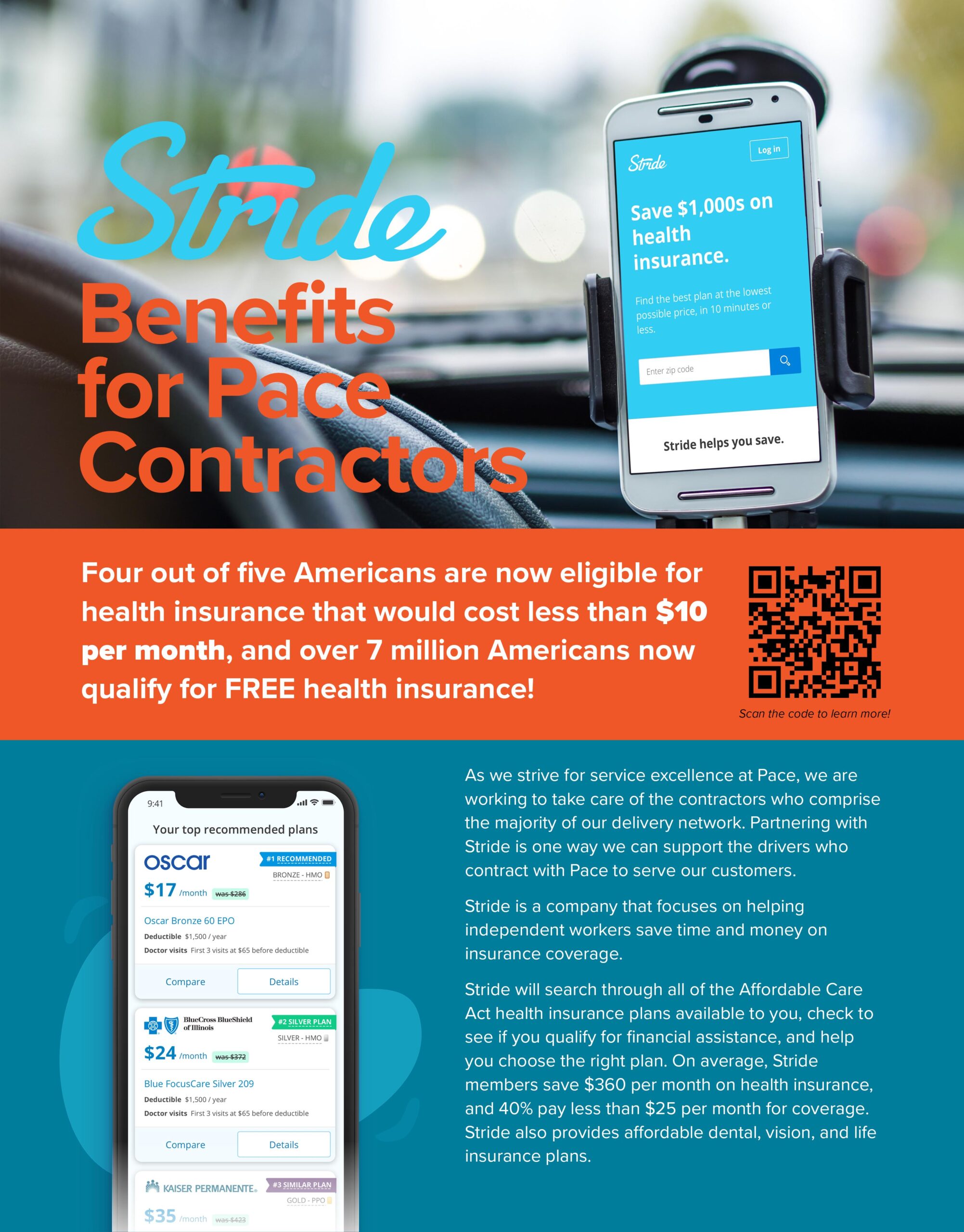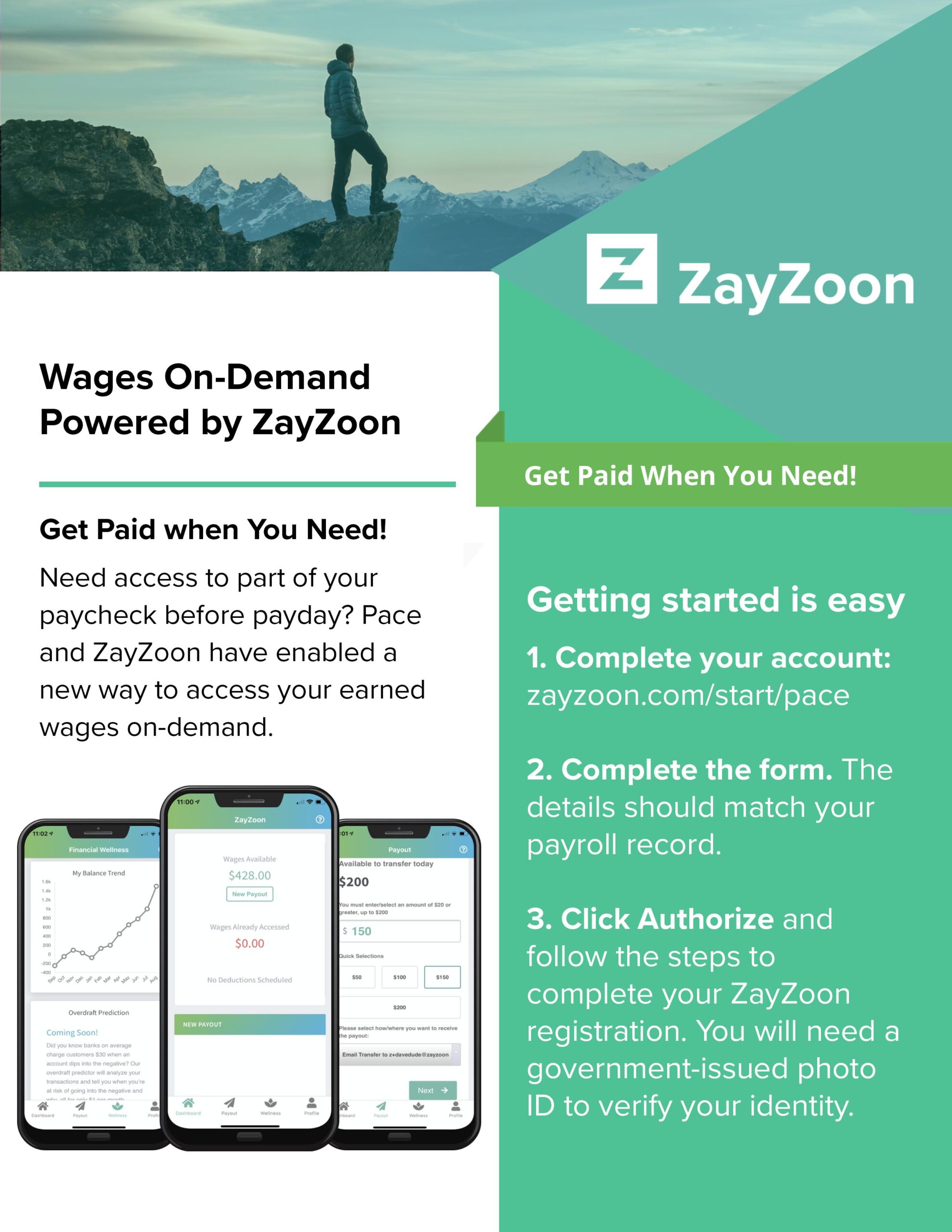By: Charles R. (Chuck) Moyer
President at Pace Runners, Inc.
President, CLDA
The internet – and global communications capabilities in general – has arguably contributed more than any other variable to the rapid changes currently occurring in the retail industry. Technology is driving change across the board, from the strategies retailers use to meet demand to the very consumer behaviors that drive demand itself. We are currently experiencing the technological equivalent to a major climate shift akin to the end of an ice age. Those who do not, or cannot, adapt quickly to the new world will not survive.
The Fast Rise of E-Commerce
By now, everyone is familiar with the rise of e-commerce as the industry’s latest successful model. Most readers have no doubt experienced firsthand a personal evolution of sorts, as the initial skepticism toward online purchasing swiftly faded to acceptance and even expectation as the once novel became mundane. Gen Z shoppers never even knew a world without the internet as a marketing channel and make online purchases with a natural ease and comfort.
Much of the way we shop online today was shaped by the strategies used by early online retailers. The young internet was fraught with all manners of unknown peril. How could you be sure you would receive what you paid for? For that matter, how could you be sure you would receive anything at all and that the guy on the computer at the other end wasn’t just stealing your money, only to disappear in a whiff of anonymity? These problems posed real obstacles to the nascent online retail industry. A combination of free market economics and a favorable regulatory environment (more on that later…) solved most of the original problems and helped catapult online shopping to the front of the marketplace.
For years, we have watched as online sales have skyrocketed. It has looked for some time as though the traditional physical marketplace was quickly obsolescing in the face of shifting consumer preferences. Entire new industries were built in response to meet and anticipate the needs of online shoppers and sellers. But even as the online marketplace has seemingly come to dominate, brick and mortar retailers aren’t ready to throw in the towel just yet.
Brick and Mortar Leverages Advantages
Online shopping has become popular for several reasons, but mainly for convenience. As new players enter the market, competition forces sellers to offer more and more convenience to lure and keep consumers. Two-day shipping has become a standard demand, made universally expected thanks to the success of Amazon Prime. Now other large retailers are changing their distribution models to allow for faster delivery options.
But that convenience comes at a cost. It is great to order online if you can wait a few days, but for the things we need right now, brick and mortar holds a clear competitive advantage. The convenience of time preempts the convenience of home delivery and possibly better prices. Brick and mortar retailers also beat their online counterparts when it comes to certain types of products, such as perishables. But even fresh produce and other groceries are not exempt from the e-commerce revolution.
In the past several years, same-day delivery services have edged into the marketplace to meet the demand for online grocery purchases. Companies such as Shipt, recently acquired by Target, offer third-party personal shopping services, where customers can place grocery orders online and a real person will physically go the store, pick out the items, and bring them to the customer’s door – all in a matter of hours! Other grocery retailers such as Whole Foods and Publix have developed their own in-house grocery delivery services. Whole Foods hopes to leverage parent company Amazon’s existing global delivery competencies into a successful service model for the local market. In this way, the brick and mortar grocery store becomes a dual-purpose marketplace and fulfillment center, a concept that is quickly gaining popularity.
While consumers have been quick to adopt online purchasing for inexpensive or commodity products, they are still skeptical when it comes to others. Most people still prefer to purchase big-ticket items like jewelry and automobiles in person so they can inspect the product themselves before they buy, and so they have some recourse at a physical storefront should the product fail.
Physical products as part of the shopping experience is a key advantage for brick and mortar retailers. If a picture is worth a thousand words, the actual object is worth a thousand pictures. Many retailers have adapted by adopting a multi-channel model, offering both in-store and online sales. This allows them to offer customers a physical experience in a showroom coupled with the convenience of online ordering and home delivery. Larger retailers like Wal-Mart and Target have been leveraging their brands and marketing resources to take advantage of this hybrid model. Shoppers can buy most of the products online that they can see in the store down the street, plus many more. In fact, most large retailers with e-commerce sites also allow third party sellers to use their online marketplaces, giving consumers greater choices and smaller sellers the opportunity to access a much larger market.
See in Store, Buy Online
As more people prefer to research products and buy online, brick and mortar stores are transitioning into de facto showrooms. Same store sales have been declining, even as retailers make up this business in online sales. With less need for inventory on store shelves, many brick and mortar retailers have repurposed their existing physical spaces to meet new needs, such as operating unused store space as miniature fulfillment centers.
Multi-channel retailers offering a combination of online plus in-store sales can now leverage their existing infrastructures to add value for consumers. Retailers can search store inventories in the local area and locate a particular SKU, then give the customer the option of home delivery or picking up in-store. “Ship from store” options allow the customer to access locally available inventory without going through a fulfillment center, and helps sellers clear old product from store shelves. Competition with other retailers plus consumer expectations put pressure on sellers to fulfill orders more quickly. Using the stores themselves as local fulfillment centers makes same-day deliveries viable, creating even more value for consumers.
The future of the brick and mortar shop is unclear, but most industry experts expect traditional stores to become showcases for customers to see and test products before ultimately purchasing them online. Backrooms will be incorporated into a network of close distribution points from which to dispatch product.
Delivery Options Abound
While home delivery is still the norm for many people, urban populations are increasing, with more and more people choosing to live in multi-tenant buildings and in neighborhoods without a safe place to leave deliveries when the customer is not at home. In addition to in-store pick up, retailers and logistics professionals have moved quickly to address this need in a variety of ways. UPS and Amazon have both installed thousands of locker boxes in urban areas, allowing drivers to leave packages in a secure area that customers access with a unique code.
Some carriers, such as FedEx, have collaborated with nationwide brick and mortar retailers like Walgreens to create pickup points at convenient store locations. Customers can collect their packages when they stop to pick up a gallon of milk on the way home from work. This creates a reason for people to stop at the brick and mortar store in the first place, and then incentivizes them through convenience to make other purchases while they are there anyway. For even more expediency, Amazon customers can choose to have their orders delivered directly to the trunk of their vehicle, seamlessly integrating consumer logistics into their everyday lives.
Adding Value: In-Store Shopping Evolves
As the need for physical storefronts decreases, brick and mortar retailers must find new ways to add value to the physical shopping experience. Sellers are testing some exciting strategies to appeal to in-store shoppers and stay ahead of consumer trends. Target and many other tech-driven companies are leading the way in self-service and automated checkouts. Some retailers such as Amazon are even experimenting with the use of RFID tags to let customers fill a cart and bypass the register altogether, scanning the items upon exit and charging the credit card on file for the customer account.
Still other retailers are integrating the online and in-store experiences in creative ways. Magic Mirror allows shoppers to virtually “try on” different outfits in the dressing room and then have a sales associate bring them the actual item from the rack. Customers can browse available inventory, see different options, and even have a digital assistant help choose complementary items and accessories.
These are just a few ways that brick and mortar stores must enhance the customer experience to offer a compelling reason to shop there. Customers are increasingly demanding integration between their online and offline lives, and across devices. In response, brick and mortar retailers are investing in omni-channel marketing, a strategy that seeks to seamlessly integrate the customer experience across all platforms. The smartphone is central to the shopping experience today. Many consumers begin their shopping experience online, so stores that can leverage technology to match what someone is seeing on her phone to the physical product on the shelves hold a distinct advantage. Big data also provides insight into consumer behaviors, giving retailers an opportunity to personalize each shopping experience.
In fact, many brick and mortar retailers are realizing that shoppers, especially Generation Z and Millennials, are looking for shopping experiences when they visit brick and mortar stores. Savvy retailers are using technology to encourage consumer engagement in new ways, creating lifestyle centers where shoppers can immerse themselves in a hybrid online and offline world. User-Generated Content (UGC) ties unique user experiences to retailers’ online brands, turning customers into powerful brand advocates who create stronger loyalty and richer experiences for other shoppers.
For instance, a customer uses her cell phone to record a short video clip of herself modeling a dress for her friends in a popular boutique. Then she posts it to Facebook, tagging the store. This creates a fun, win-win relationship between the shopper and the store, and brings attention to both of them on social media. Peer influencers and brands can leverage each other’s popularity to increase clicks and likes. User-Generated Content also adds a layer of realism for others online who can see actual people like them interacting with the shop personnel, trying on outfits, or reviewing products.
The Future is Hard to Predict, But Some Things are Certain
Despite the ever-increasing popularity of online shopping, the unique advantages that brick and mortar stores offer are not going away just yet. Consumer preferences are fickle, and may abruptly change with little notice. One area where brick and mortar stores have been operating at a distinct disadvantage is sales tax. Online retailers selling across state lines traditionally were exempt from collecting sales tax. This has rankled shopkeepers for decades, giving online sellers an unfair regulatory advantage – albeit one that may arguably have been necessary to help the online marketplace gain wide acceptance in the first place.
Now the internet has been around long enough that regulators and legislators have caught up. Recently, the Supreme Court issued a ruling, to the delight of brick and mortar shops across the land, giving states the authority to collect taxes on online transactions. While this ruling will likely do little to slow the growth of online sales, it does re-level the playing field somewhat by removing an unfair, artificial market condition that has hobbled brick and mortar sellers for quite some time.
Ever-changing consumer habits and preferences, coupled with uncertain regulations make it difficult to predict exactly what the brick and mortar retail landscape will look like in the future. Likely different models will find success in different markets, and there will never be a universal solution. The one constant factor, however, is logistics. People will never stop consuming. And no matter how people buy things, those things have to get somewhere, somehow – with logistics.









